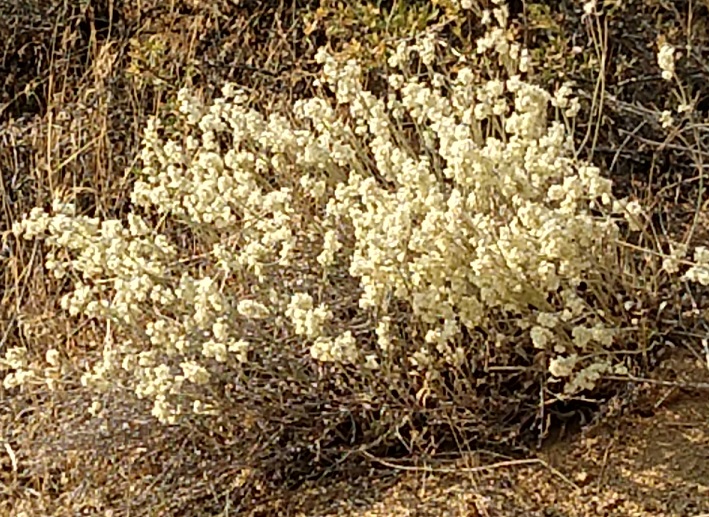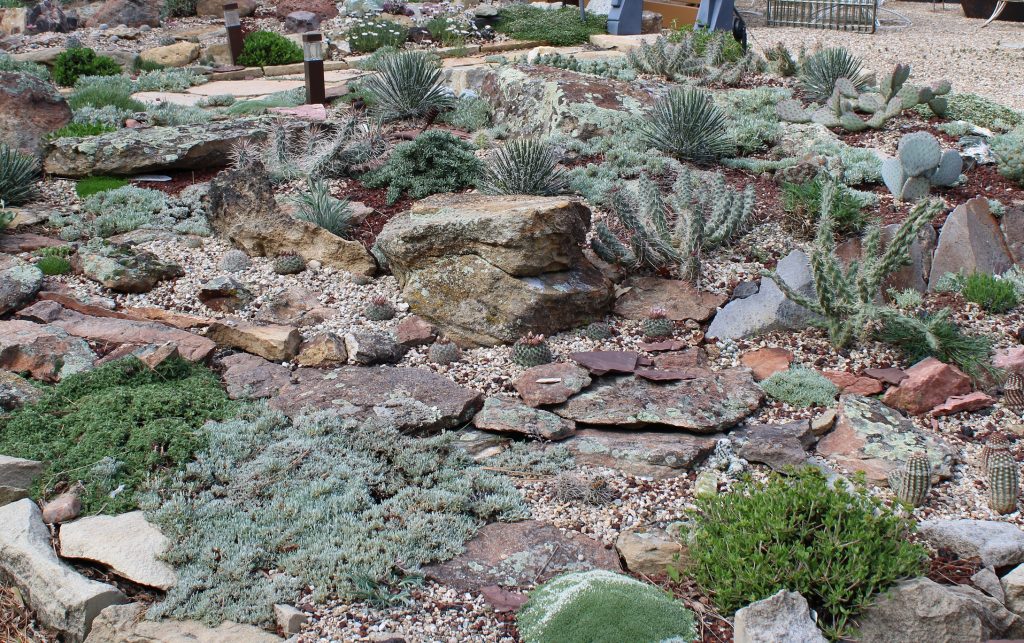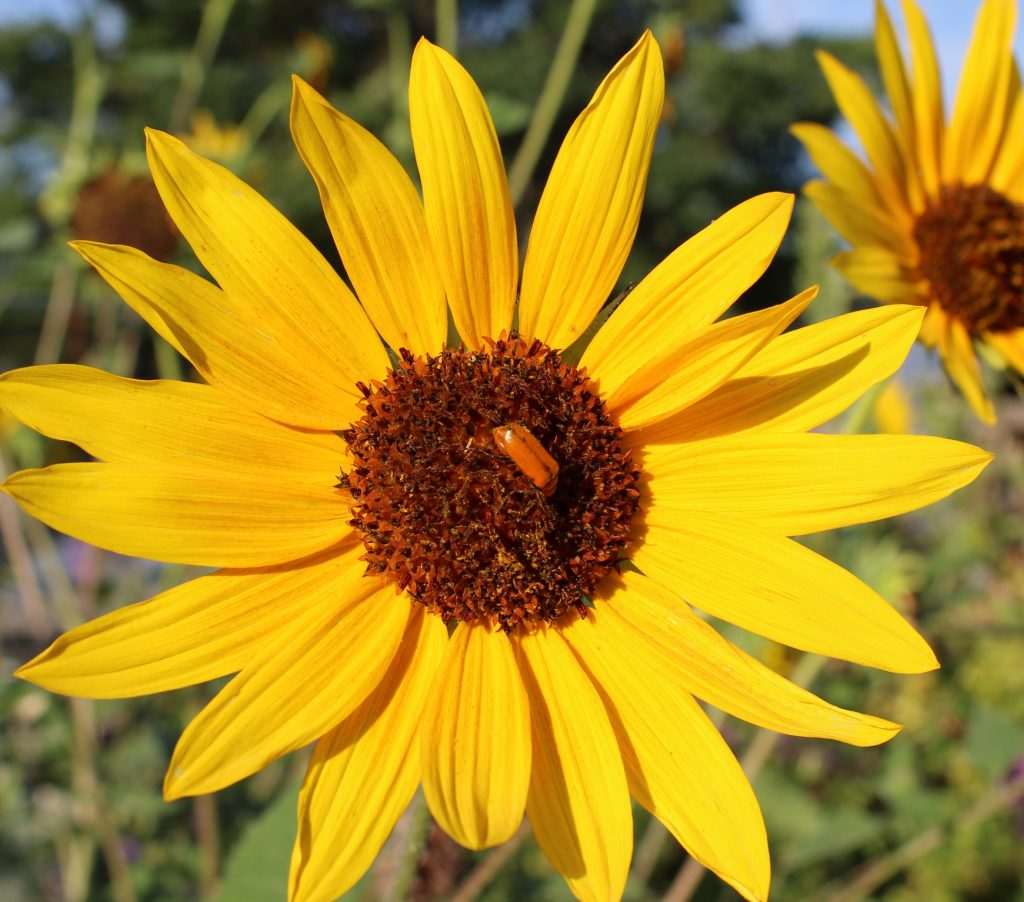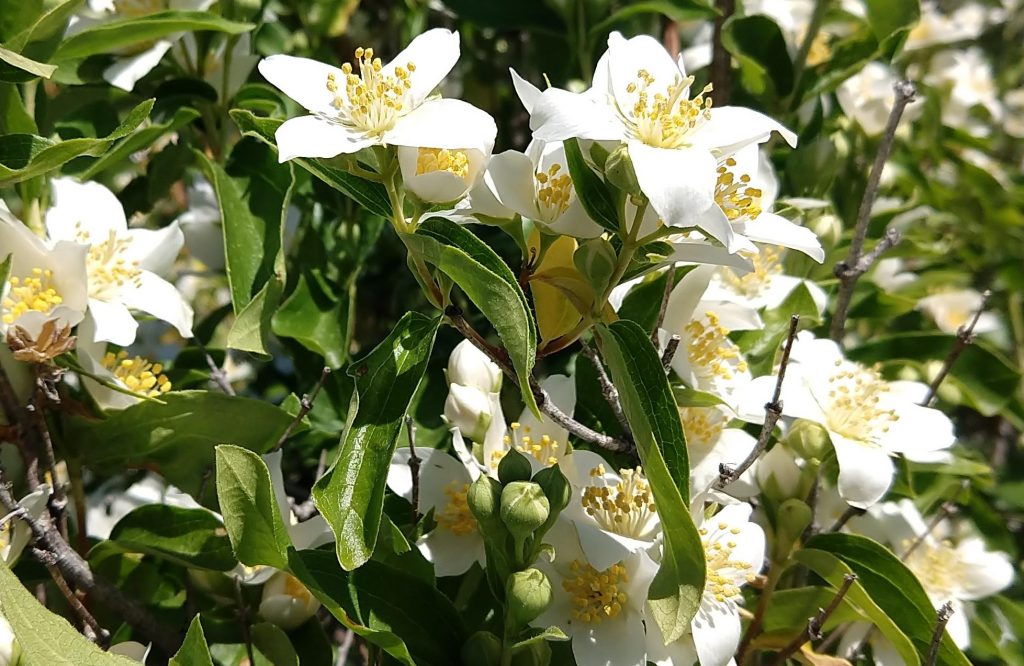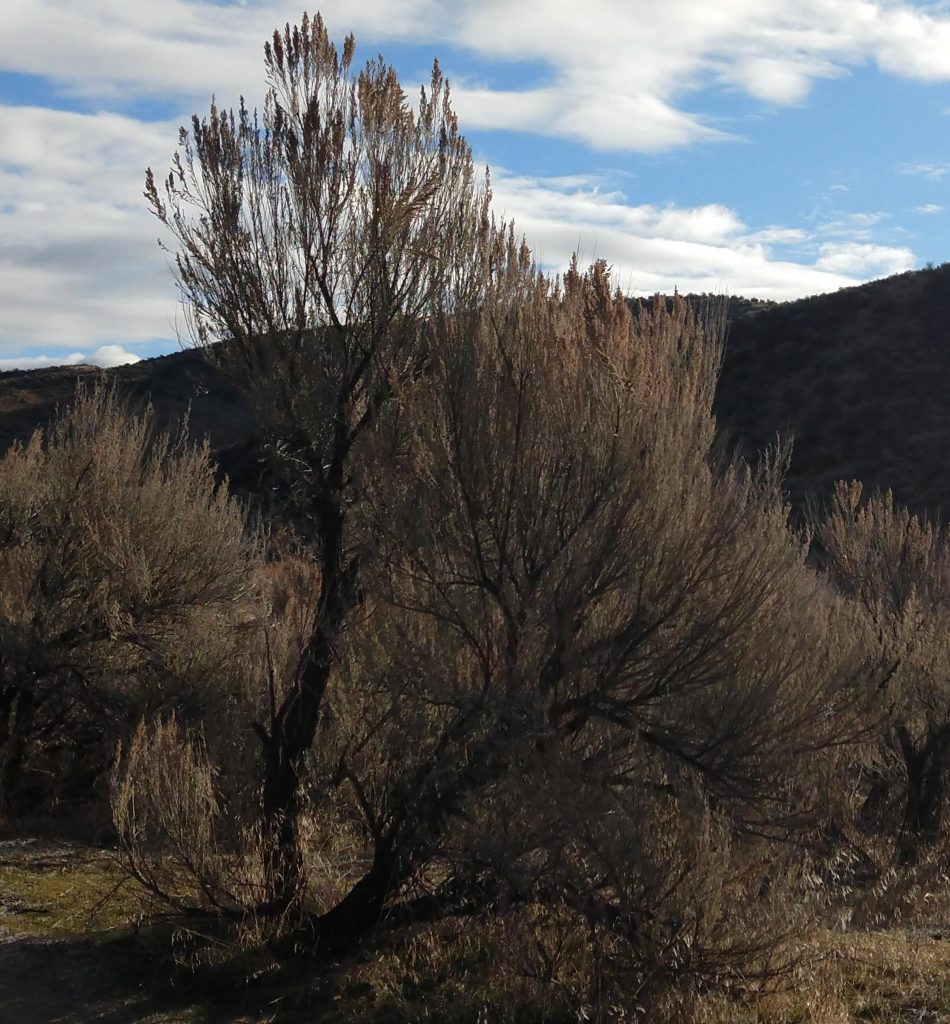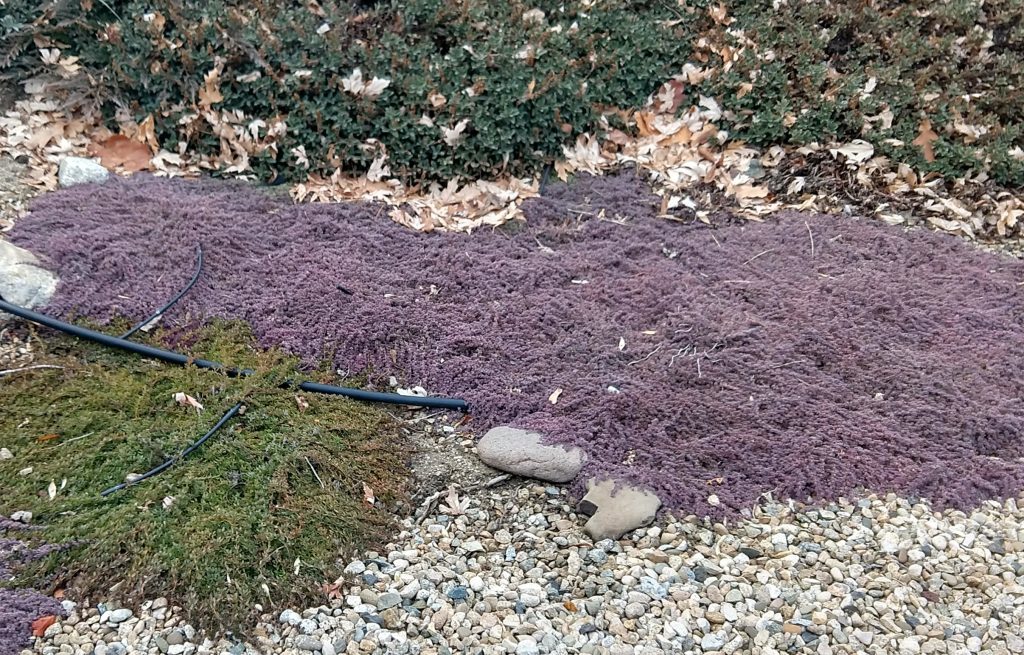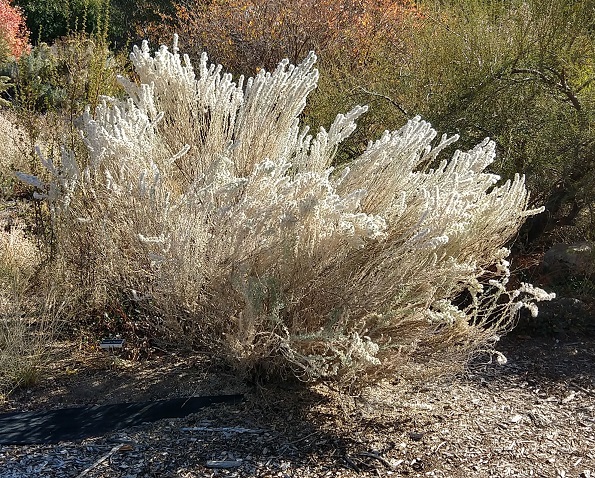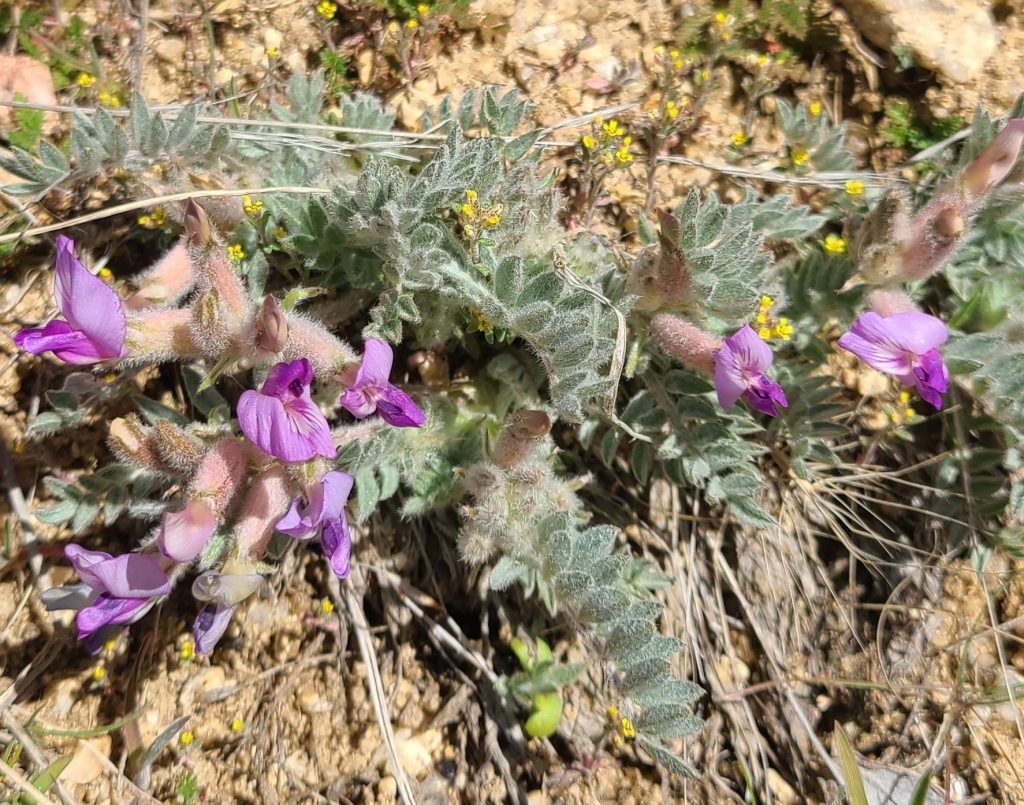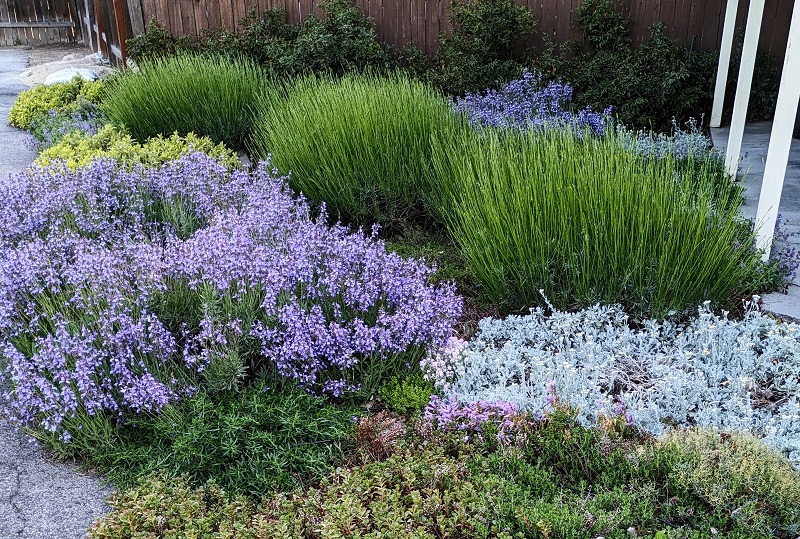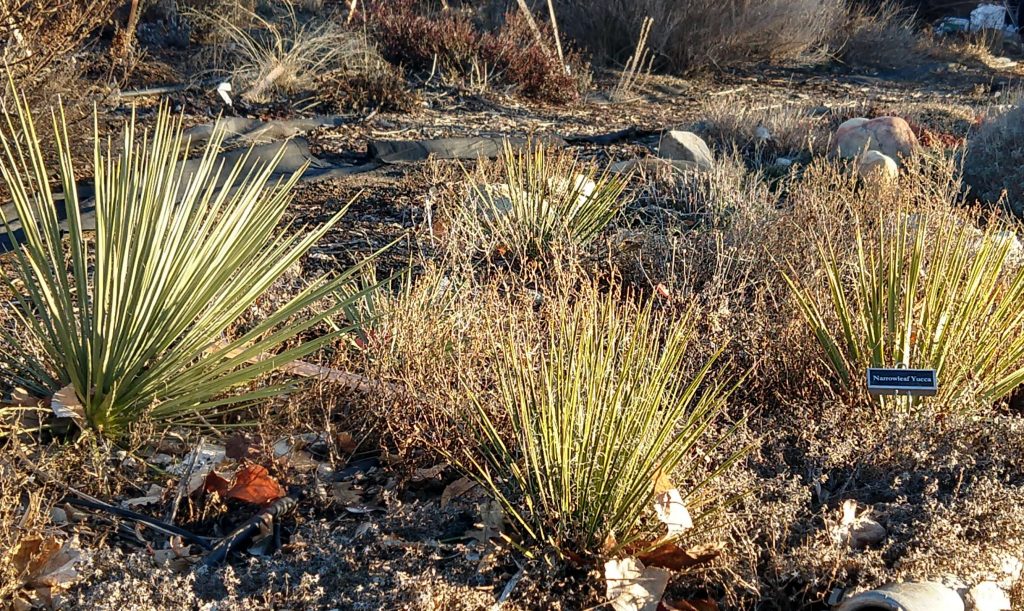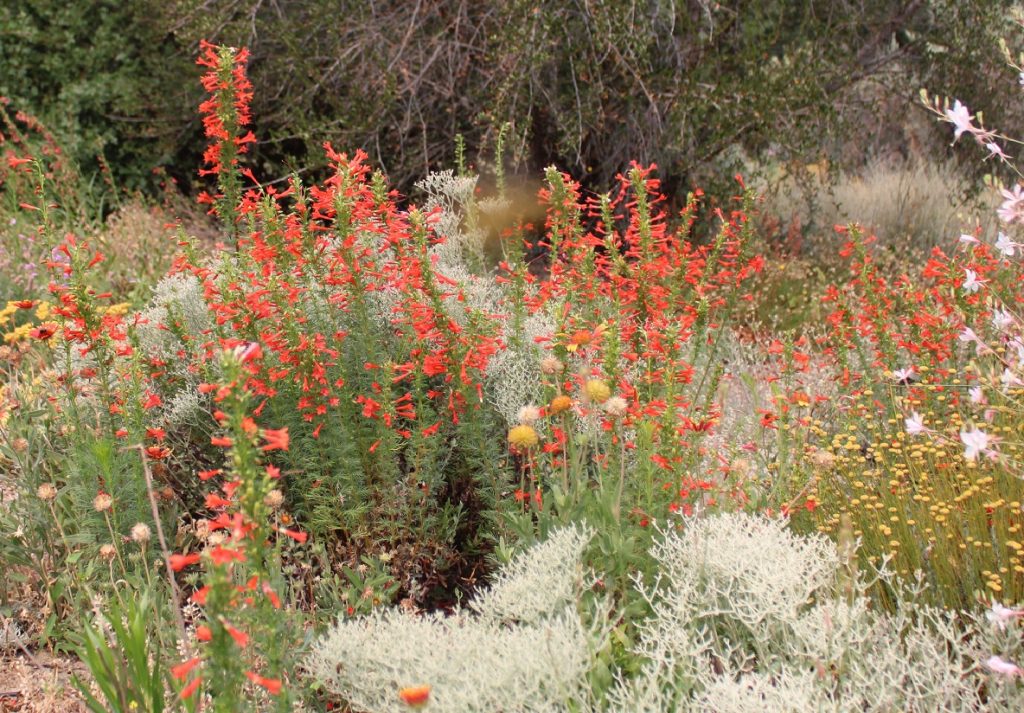
This mass of showy red flowers is a major hummingbird magnet right now at the nursery. Standing Cypress is an odd name for this biennial from Texas, closely related to our nearby–but smaller–native biennial, Scarlet Gilia. As biennials, these plants flower only in their second year. After flowering, they will produce prodigious quantities of seed and die. Next year these seeds will sprout into the non-flowering first-year plants. So in order to assure flowers every year, plant Standing Cypress two years in a row. Like self-sowing annuals, biennials are a bit of a pain, since they move around from year to year. But the long-lasting explosion of flowers makes it all worthwhile!

